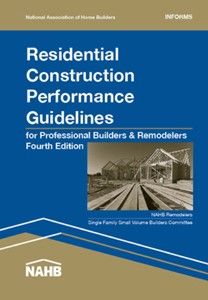
Even the very best contractors sometimes struggle to fulfill customer expectations. Home building and remolding are handmade crafts, and many building materials, like wood and stone, come with nature’s inherent imperfections. But today’s customers have grown accustomed to consistent, factory-perfect products, such as cars, computers, and clothing. If you go to a factory store, you’ll discover it’s hard to identify the defect that merits discounts of 75% or more. Even the slightest imperfection prompts rejection. With such high expectations, it’s challenging to keep today’s customers satisfied.
Whatever your role in the construction process, ensuring customer satisfaction during the weeks and months required to complete a typical project is a tall order. The easy part is under your control, do the very best work and provide excellent customer service. The other half comes with establishing and then managing your customer expectations, a process that needs to begin well before the design and construction do.
Going Over the Warranty Early and Often
The National Homebuilders Association (NAHB) publishes boilerplate home building and remodeling warranty standards, such as the “Residential Construction Performance Guidelines.” These standards set the tolerances from normal construction defects. For example, when a customer calls to claim the driveway you poured has a construction defect, and points to a 1/16-in. crack, the warranty standard will state that “Cracks (outside of control joints) that exceed 1/4 in. width or 1/4 in. in vertical displacement will be repaired.” And then the guidelines even define the repair, “The contractor will repair the affected areas to eliminate cracks that exceed the performance guideline with a material used to fill cracks in concrete.” The guidelines go on to include a discussion section providing a clear explanation of the typical behavior of an exterior concrete slab and what to expect.
I used to use the NAHB standard and include it with my Homeowner’s Manual, which had general guidelines for the care and feed of a home and then specific warranty information for the products installed, and our general builder’s warranty. Although it helped with warranty claim resolution, by the time you had to take the step of resolving a claim, the customer was already unhappy.
So instead of using the warranty standards to defend myself, I began to use them, in particular the “Discussion” section to set expectations up front. I would provide the customer a copy of our warranty along with the bid proposal, and ask them to thumb through it and get comfortable with the standard. They always said yes, and I assume very few actually read it. But then as we began each phase of the project, I would advise my customer to read that section of the warranty, and often have a kitchen-table talk to go over the pertinent “Performance Guidelines” and “Discussion” sections, as a kind of tailgate meeting with the client that served to temper expectations and define the realistic parameters of total satisfaction. And sometimes, we even achieved it.
Other times, I had a signed receipt for the information imparted and pretty good defense for the unreasonable claim.

Residential Construction Performance Guidelines for Professional. Builders & Remodelers, Fourth Edition. BuilderBooks, it's available online free. Use it.






























View Comments
WHERE IS THE LINK FOR THE FREE ON-LINE DOWNLOAD. NAHB HAS THE BOOK BUT FOR $39.95 FOR MEMBERS!
Googled "Residential Construction Performance Guidelines for Professional. Builders & Remodelers, Fourth Edition. BuilderBooks, free" , it was the 1st link in the list, but I use an ad blocker. A pdf file.
Write to me at fpages@buildingaffordable.com and I'll send.